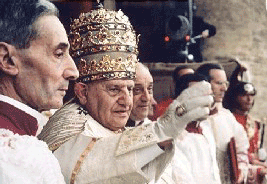Forging an Incarnational Theology Two Score Years after <em>Nostra Aetate</em>
DOI:
https://doi.org/10.6017/scjr.v1i1.1352Keywords:
incarnation, Jewish-Christian relations, salvationAbstract
Surveying how Christology is formulated in the wake of Nostra Aetate, this paper concentrates on three models: (1) The man became words, words, words; the quest for the historical Jesus has often emphasised the â allegedly unique â teachings of the Nazarene. Its main problem, however, is that the contemporaries of Jesus are no longer presented as his historical context but as his theological contrast. (2) The word became fleshwounds; due to Mel Gibson’s movie The Passion of the Christ one single Greek word (Mk 15:15; fragellosas, i.e., ”after having flogged”) has been at the centre of the Christological discussion during 2004. His version of the medieval passion plays highlights its particular problems. Having first described the flaws of these two models, the paper will seek to explore how â two score years after the declaration Nostra Aetate â the Johannine statement that the Word became flesh could be helpfully articulated today.Downloads
Published
How to Cite
Issue
Section
License
Copyright (c) 2015 Studies in Christian-Jewish Relations

This work is licensed under a Creative Commons Attribution 4.0 International License.
Please navigate to the Copyright Notice page for more information.

